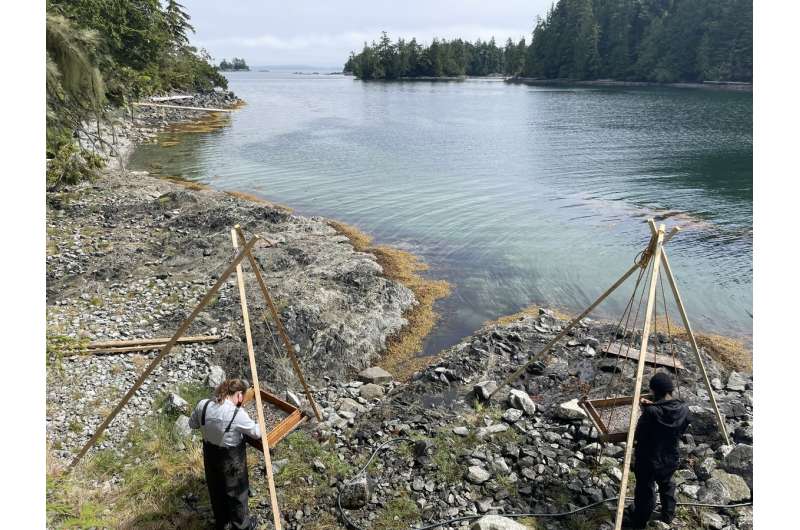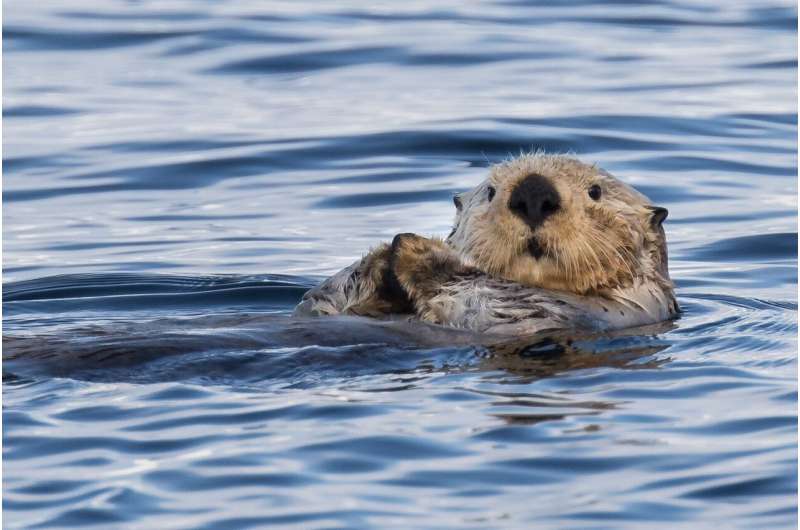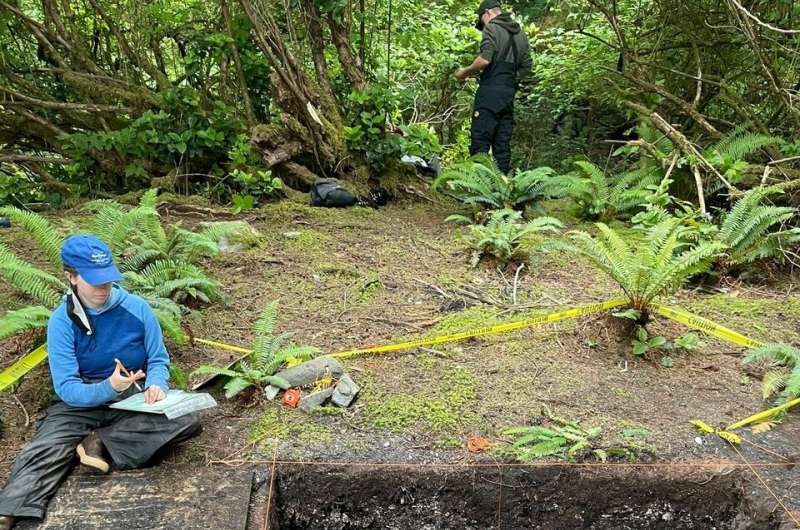Humans managed shellfish and their predators for millennia, study finds

Due to their protected status, sea otter populations have rebounded across the Pacific Northwest Coast following their near elimination during the historic maritime fur trade. But the recovery of these shellfish predators and the federal laws now protecting them challenge local Indigenous communities who hold constitutionally protected rights to harvest those same shellfish but who are legally unable to hunt sea otters to protect these traditional foods. Now a new study confirms that for millennia, Indigenous people managed their relationship with shellfish and sea otters to safeguard their access to shellfish which remain important for food, social, and ceremonial uses today.
“What our research found was that people actually kept sea otters out of particular areas which gave them access to large shellfish,” said first author Erin Slade, a recent graduate from Simon Fraser University’s School of Resource and Environmental Management. The result was likely a patchwork quilt of sea otters along the coast, with these keystone predators present in some areas and rare to absent in others.
“Our results challenge the widely held assumption that sea otter populations once existed at high numbers at or near carrying capacity in every suitable habitat across the extent of their range,” said senior author and professor Anne Salomon, marine ecologist and Royal Society of Canada College member at Simon Fraser University. “The implications directly challenge our perceptions of what constitutes a ‘recovered’ sea otter population.”
The findings call into question Canada’s Species at Risk Act, as well as endangered species policies in the US which assess conservation status based on regionwide population estimates and trends. Federal agencies assume management authority over sea otters and shellfish despite long-established Indigenous governance and management practices, including marine tenure systems, strict hunting protocols, and sophisticated mariculture technologies.

The research, published August 18th in the journal Ecosystems, supports longstanding claims by coastal Indigenous communities that unilateral protection for sea otters not only interferes with traditional foodways, but also creates an imbalance in coastal ecosystems that had been in place for thousands of years, said Hup-in-Yook, also known as Tom Mexis Happynook, a Hereditary Chief of the Huu-ay-aht First Nations who advised on the research. “These policies removed us from our responsibility within our territories as caretakers of our food sources,” he said. “And by removing humans from the ecosystem where they’ve been living for thousands of years, that made everything go out of balance.”
For the study, researchers measured the size of ancient mussel shells at archaeological sites along the British Columbia coast spanning almost 6,000 years and compared them to mussel sizes at sites with and without sea otters today. Since sea otters consume large amounts of shellfish and target large individuals, large mussels can only survive in otter-free areas.
The researchers found abundant large mussel shells at ancient village sites. That suggests sea otters were rare or absent where people gathered shellfish during the archaeological record at Indigenous villages. Today mussels of that size are only found in areas where sea otters have been absent for more than 100 years, the researchers noted. And yet sea otter bones persist through time in the archaeological record with no evidence of extinction, representing over ten millennia of coexistence with humans and shellfish.

Kii’iljuus, also known as Barbara Wilson, a Haida Matriarch and elected representative of the Council of the Haida Nation said the study is significant both scientifically and culturally. After years of seeing her culture’s traditional management practices dismissed or ignored by policymakers, she said the results were validating.
“Our people have talked about this for hundreds of years,” said Wilson, who advised on the research. “It’s important because it shows how our ancestors managed the oceans and all the critters—both on land and in the water—and how conservation was built into that management.”
“Contemporary conservation policies still hold large blind spots,” noted senior author Iain McKechnie, a coastal archaeologist and assistant professor at the University of Victoria. “Government policies and ecological assumptions continue to lack a certain understanding of Indigenous rights and the long history of coexistence. While it may not be intentional, this effectively ignores a ten-thousand-year history of human-otter interaction on the Pacific Coast.”
Wherever researchers have looked across the Pacific Rim, from the western Aleutians to southern California, there is evidence that sea otters were rare or absent prior to the fur trade. This means that their well-known cascading effects on kelp forests and other coastal ecosystems would have also been absent from some areas. The implications of this emerging view for ecology are profound.
According to Salomon, “This changes our fundamental understanding of what coastal food webs looked like in the past and how they operated across the Northwest Coast of North America.”

Importantly, Salomon hopes the results of this research will help change the conversations around sea otter conservation and ocean governance more broadly, “Equitable and durable marine conservation and fisheries policies can only be achieved by addressing the rights, decision-making authority, knowledge and objectives of Indigenous people.”
Wahmeesh, also known as Ken Watts, elected Chief Councillor of the Tseshaht First Nation sees opportunity stemming from this research, “People are stepping up and trying to figure out solutions. Don’t underestimate the power of people. We have the ability to create change. It’s just a matter of doing it and doing it together.”
Indigenous collaboration and leadership key to managing sea otter population recovery
Erin Slade et al, Archaeological and Contemporary Evidence Indicates Low Sea Otter Prevalence on the Pacific Northwest Coast During the Late Holocene, Ecosystems (2021). DOI: 10.1007/s10021-021-00671-3
Citation:
Humans managed shellfish and their predators for millennia, study finds (2021, August 18)
retrieved 18 August 2021
from https://phys.org/news/2021-08-humans-shellfish-predators-millennia.html
This document is subject to copyright. Apart from any fair dealing for the purpose of private study or research, no
part may be reproduced without the written permission. The content is provided for information purposes only.
For all the latest Science News Click Here
For the latest news and updates, follow us on Google News.

